The long-term risks for teens that abuse substances are increased likelihoods of adult addiction, developing certain cancers or heart disease and engaging in dangerous sexual behaviors that could result in contracting a sexually transmitted disease and/or an unplanned pregnancy. But there are also serious short-term risks, with the most serious being the increased likelihood of getting into a vehicular accident.
In addition, while many teens are advised not to drive a car while under the influence they may not use enough caution when considering the sobriety of another driver.
A recent study highlights the risk teens take when they drive a car or enter the car of a driver that is under the influence. Conducted by researchers at the Mailman School of Public Health at Columbia University, the study examined the risk of drug use and the risk of drug use combined with alcohol use and how such use impacted the risk of a fatal crash.
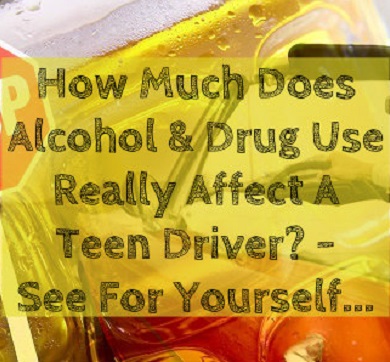
Drastic Increases In Fatal Crashes When Drugs Are Involved
The researchers found that there was a drastically increased risk of experiencing a fatal crash when drugs were involved in an accident, and this was particularly true when the drugs were used in addition to alcohol.
The study’s data was pulled from two national databases commissioned by the National Highway Traffic Safety Administration: the 2007 National Roadside Survey of Alcohol and Drug Use by Drivers and the Fatality Analysis Reporting System (FARS). FARS compiles investigation information for all vehicular crashes that resulted in a fatality within 30 days of the crash occurring on a public road.
This study is unique in its use of the two databases together to compile information about circumstances surrounding events, such as the individuals and vehicles involved.
The study, led by Guohua Li, MD, DrPH, professor of Epidemiology and director of the Center for Injury Epidemiology and Prevention, found that 31.9 percent of all drivers implicated in fatal crashes tested positive for at least one drug. Of those interviewed at roadside, 13.7 percent tested positive for at least one drug. Overall, drivers that test positive were three times more likely to be involved in a fatal car crash, with the highest risk associated with depressants followed by stimulants.
The study also showed that blood alcohol levels were increased in 57 percent of those involved in fatal crashes, while 8.8 percent of the roadside interviews had an elevated blood alcohol level. Approximately 20 percent of the fatal crash drivers tested positive for alcohol consumption and one or more additional drugs. Among the roadside interviews, 2.2 percent tested positive for alcohol and another drug.
Alcohol Increases Fatal Car Crashes By 13 Times!
The risk of involvement in a fatal car crash increased 13 times for those that tested positive for alcohol only, two times for those that were drug-positive and 23 times for drivers that were under the influence of both drugs and alcohol.
The authors of the study note that drugs may be detectable in a driver’s blood test that may not be causing impairment. In addition, the authors say that the study does not account for various levels of tolerance that may be exhibited among individual drivers, making it difficult to measure drug impairment.
Decreased Risks When Parents Talk With Their Teens
The findings highlight the importance of talking with teens about the risks of driving a vehicle while under the influence or entering a vehicle in which the driver has been using.
Parents that explain the risks and dangers can help their child make an informed decision.
When you look at the numbers, it can be discouraging to see how many teenagers continue to experiment with drugs and alcohol as this often leads to addiction. What most teens have difficulty comprehending is how this behavior could affect them for the rest of their lives.
Types Of Drugs Teens Experiment With
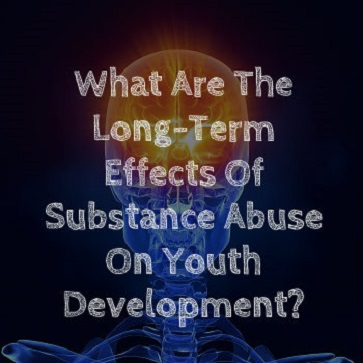 Just over one million American teenagers are addicted to illegal drugs, with another 915,000 addicted to alcohol. Even if they’re not addicted, an alarming number of teens are regularly using, with over half of high school seniors reporting having experimented with drugs and close to 30 percent having tried something other than marijuana, like heroin, cocaine, prescription drugs, inhalants, sedatives and mind-altering hallucinogens. The highest rate (19.9 percent) of illegal drug use occurs between 18 and 20 years, with the next highest rate (16.4 percent) happening between 16 and 17.
Just over one million American teenagers are addicted to illegal drugs, with another 915,000 addicted to alcohol. Even if they’re not addicted, an alarming number of teens are regularly using, with over half of high school seniors reporting having experimented with drugs and close to 30 percent having tried something other than marijuana, like heroin, cocaine, prescription drugs, inhalants, sedatives and mind-altering hallucinogens. The highest rate (19.9 percent) of illegal drug use occurs between 18 and 20 years, with the next highest rate (16.4 percent) happening between 16 and 17.
Alcohol use affects more than 10 million teens, with 5.1 million regularly binge drinking, which is defined as downing more than four or five drinks during a single sitting. Not far behind is inhalant abuse, with 25 percent of all teens 10- to 17-years-old saying they have friends who inhale dangerous fumes from things like paint, computer cleaner or glue.
Teen Drug Use Can Have Negative Effects For Years To Come
Unfortunately, the bad choices made in youth can haunt for years to come. The brain undergoes vital development during adolescence. Not since infancy has their brain been changing and forming with such rapidity.
Drug use can disturb the proper development of the prefrontal cortex in the brain. This area of the brain is responsible for important functions like organization, risk assessment, impulse control, consequence prediction and planning. But the limbic system, corpus callosum, hippocampus and cerebellum are all still forming and vulnerable to the changes wrought by drugs. Functions like emotional control, goal-setting and memory/recall are all still developing, and drug use could cause permanent problems in these areas.
Studies have repeatedly shown that heavy marijuana use damages key brain functions for years, with some researchers believing the changes are permanent. Processes like critical thinking, planning and complex attention are all shown to be diminished by heavy marijuana use. Girls seem to experience longer-lasting ill-effects, but both females and males show problems with myelin sheath formation, which affects brain signaling.
MDMA, which also goes by Molly and ecstasy, is associated with sensations of euphoria and social bonding, which is why it’s popular with young people attending large group gatherings such as concerts and dance clubs. Ironically, lowered serotonin levels as long as seven years have been observed in laboratory animals after they’ve been given MDMA, with serotonin closely associated with emotional happiness.
Alcohol causes harm to adolescent brains as well, especially binge drinking. Heavy drinking in teens has been shown to lower their ability to problem solve and understand spatial relationships, as well as memory and vocabulary impairment. And just like drugs, alcohol affects the limbic system, meaning emotional well-being is disrupted. In fact, there appears to be a connection between drinking and behavioral problems due to a lack of emotional control — researchers just aren’t sure which problem came first.
Using drugs and alcohol during adolescence can have serious and long-lasting results, with neurological development issues, impaired social development and addiction. And all of these problems can easily follow teens into adulthood.
Read More About The Effects Of Teen Substance Abuse On Families
Silk Road, the website that became an Amazon.com for online drug deals, reached its inglorious end. Visitors to Silk Road could buy and sell illegal drugs, illicit prescription drugs, weapons and ammunition or make contact with computer hackers. Ross William Ulbricht, who founded the site under the alias Dread Pirate Roberts, had been pursued by the FBI for two years.
“Silk Road” Website Shut Down – Ross William Ulbricht AKA Dread Pirate Roberts Captured
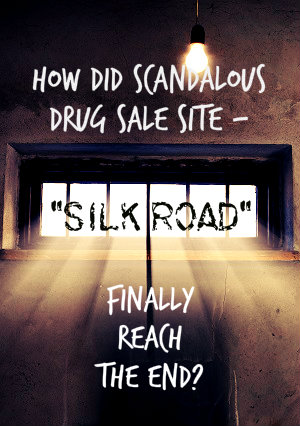 Ulbricht was arrested and the site shut down on October 1. Authorities seized $3.6 million in the virtual money known as bitcoin. Ulbricht, 29, faces a list of felonies including conspiracy to traffic in narcotics, computer hacking, money laundering and solicitation of murder.
Ulbricht was arrested and the site shut down on October 1. Authorities seized $3.6 million in the virtual money known as bitcoin. Ulbricht, 29, faces a list of felonies including conspiracy to traffic in narcotics, computer hacking, money laundering and solicitation of murder.
Silk Road was launched in 2011 and has served as an Internet clearinghouse for drug deals totaling around $1.2 billion. Ulbricht’s personal take home as middleman on those sales was reported to be $80 million.
Dread Pirate Roberts referred to a masked character in the movie and novel The Princess Bride who, it turned out, was not one man but a series of men, allowing the name to be passed on to the previous holder of the title to retire with his riches. Ulbrict is alleged to have sought out contract killers to assassinate people he disagreed with, posted an email address which contained his name in an online forum and alluded to the illegal operation on his personal LinkedIn account. All of which lead to his capture instead of retiring with his millions.
Ulbricht had everything going for him. He graduated from the University of Texas at Dallas, where he was a physics major on a full scholarship. Later he became a graduate research assistant at Penn State University, earning his Master’s Degree in Materials Science and Engineering and writing a thesis with the title “Growth of EuO Thin Films By Molecular Beam Epitaxy.” But after leaving Penn State he shifted his goals from physics to libertarian principles, viewing the Silk Road website’s forum for conducting illegal transactions as a model of economic theory that, according to his LinkedIn account, would “abolish the use of coercion and aggression against mankind.”
Selling Illegal Drugs To Teenagers Secretly Over Internet
The website and its users employed blocking software which protected identities on both ends from discovery by legal authorities. And he used a virtual currency, bitcoins, to pay for it all. The expertise behind the Silk Road and bitcoins may be admirable, but the application of that knowledge has been anything but.
Ulbricht has said that he is interested in peaceful Eastern religion and starting a family. But what Silk Road allowed was a haven for criminal activity, including the sale of illegal drugs to teenagers. The drugs were sold in secret over the Internet and then delivered by the U.S. postal service. Ulbricht tweeted about the irony, a sort of public thumbing of his nose. But authorities got the last laugh.
17 Oct 2013
You May Think It’s Molly, But It May Not Be
Hospitals face a difficult problem whenever someone comes in to be treated for a Molly overdose. The patient may believe they’ve taken a form of ecstasy, but there is no way to know what the person actually swallowed. There is no “Truth in Labeling Law” to govern illegal drugs, and many think they’ve been using Molly when they’ve really been taking some other highly dangerous substance.
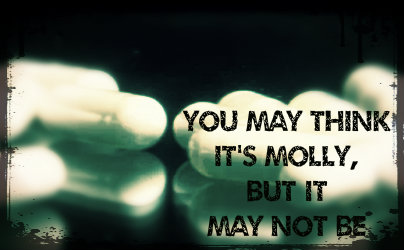
Courtesy of: www.ktsm.com
Molly is the street name for the synthetic drug MDMA. It’s called Molly because of the powder or capsule form that it comes in, as opposed to tabs, and the presumption that the “molecular,” or Molly for short, form is more pure. Synthetic drugs are also sometimes referred to as designer drugs. They are often compounds designed to mimic the effects of traditional drugs like marijuana, LSD or ecstasy, among others. Synthetic marijuana, for example, is sold as K2 or Spice.
Mislabeled And Dangerous Synthetic Designer Drugs
The problem is that you don’t know the person who designed your Molly. The Drug Enforcement Agency regularly tests the drugs it obtains through seizures. Those tests often reveal that pills are mislabeled.
Experts often find methylone in the pills, which is a key component in bath salts, another synthetic drug famous for being unpredictable and causing serious health side effects. In 2012 a man was arrested for importing methylone from China and then selling it to someone as Molly. That person died after using the drug.
Dangerous Side-Effects Of Molly
Molly is a popular drug for young people attending raves, dance clubs and concerts. The drug enhances positive emotions and feelings of bonding with others. However, Molly also increases a person’s heart rate and raises their body temperature, sometimes to extremes. One young man died with a body temperature of 109 after taking Molly. The risks of dehydration are so well known that special booths are often set up at events where Molly is expected to be used.
Symptoms commonly seen in hospitals include agitation, seizures, soaring fever and increased heartbeat. Since there is no way to know for certain what the young person actually ingested, the best hospital staff can do is to manage symptoms while they wait for the effects of the drug to wear off. Hardly reassuring.
Dying After Taking Molly
Over Labor Day weekend 2013 several young people died after taking Molly at various concert venues, with one multi-day concert in New York was shut down due to deaths. Nevertheless, rappers and rock stars continue to sing about the beauties of Molly. And young people continue to swallow whatever they are being told by their idols.
To Read More About Molly’s Dangerous Side-effects On Teens – Click Here
Already this fall one college campus has been rocked by prescription drug abuse. A cheerleader from the University of Minnesota was arrested in September when she was found in possession of drugs without a prescription. This is but a microcosm of a serious national problem. Young people all across America are buying and sharing powerful prescription medications.
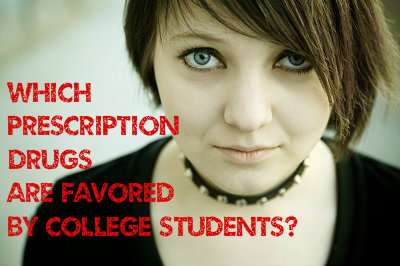 The 18-year-old at the University of Minnesota was seen wandering up and down the halls of her dormitory, seemingly in a drunken state. When officials entered her dorm room they found prescription painkillers but no prescription. They also found an electronic scale and an undisclosed amount of marijuana. She is facing three separate felony charges and potentially five years in prison.
The 18-year-old at the University of Minnesota was seen wandering up and down the halls of her dormitory, seemingly in a drunken state. When officials entered her dorm room they found prescription painkillers but no prescription. They also found an electronic scale and an undisclosed amount of marijuana. She is facing three separate felony charges and potentially five years in prison.
Majority Of College Students Sharing Prescriptions?
But her story is far from unique. One survey reported that 70 percent of college co-eds said they shared prescription medications with one another. A health official told a local news station that that for every one student with a legitimate prescription another five students possess stimulants with no prescription. And the problem is not restricted to college campuses. Another study found that 20 percent of graduating high school students say they have used prescription drugs for non-medical purposes.
One reason prescription drug abuse has escalated has to do with the enormous supply of pills that are floating around where young people can get them. An astounding 210 million prescriptions were written by doctors for painkillers in 2010, and that number has only gotten larger. With that many pills sitting on shelves in homes it’s hard to choke off the supply.
Opiates And Stimulants – Drugs Favored By College Students
The most popularly abused prescription drugs are opiate painkillers derived from the same opium poppy as heroin. When meds become harder to get or start costing too much, kids move on to heroin as it produces similar effects at a fraction of the cost.
Stimulants like Adderall and Ritalin are also popular among young people. These drugs are most often used to treat the symptoms of attention deficit hyperactivity disorder, but healthy kids take them to increase study skills, stay awake for parties and lose weight.
Dangers Of Prescription Drug Abuse
According to the Centers for Disease Control, at least 100 people die each day as a result of prescription drug overdose. The danger is real, though young people seem oblivious. The arrest of a pretty young college cheerleader is just the tip of the iceberg.
My story of addiction and recovery is the story of a near miss and an incredibly lucky break. Therapists talk about resilience and protective factors (as opposed to risk factors)—well, I had a boatload of risk factors but somehow I was able to muster some reserves, survive and ultimately thrive.
My story begins when I woke up from a blackout and realized that I had been raped. I remember drinking the night before, but I don’t remember anything from about halfway through the night until the next morning. The other people at the party helped me piece it together—what they saw and heard plus what I felt and what it all added up to. I was 13 years old and was already drinking myself into blackouts. The boy who raped me said he didn’t remember it either. He was only 14.
Within a year I was raped again, this time by an adult—the father of the child for whom I babysat. He was drunk. He was driving me home from babysitting his infant daughter, and made a wrong turn. I knew what was coming and just braced myself for it. I never told anyone.
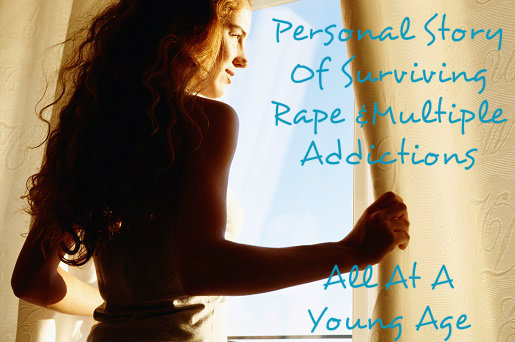
Stopping One Addiction And Dangerously Starting Several Others
I stopped drinking but I didn’t stop trying to drown. I smoked marijuana, ate Quaaludes, black beauties, and pink footballs; I snorted cocaine, and eventually snorted heroin. I dated a dealer, and did anything I was handed, no questions asked. It came to me one day, an epiphany of sorts: I realized that if I continued to live the way I had been living that I would die. I had stopped short of using needles, but snorting coke and heroin wasn’t getting me high anymore. I had to escalate again, or get clean, or face the reality that life as a heroin addict-garbage head was likely going to kill me.
A mental health professional had said to me that women with my history end up either dead or in prostitution. For a 15-year-old, this was a pretty heavy realization. I wanted to talk with my mom about it, but when I asked her to talk with me later that day, she said no. I pressed her, telling her that I needed her to listen to me. “No,” she said, “I can’t listen to you.”
Pain, Molestation And Addiction At A Young Age
So maybe my story doesn’t begin at age 13 in a blackout after all. If by age 15 my mom couldn’t tolerate listening to me, obviously a whole lot more was going on and had been for some time. I started drinking when I was 12. I wasn’t the only seventh-grader who was drinking, but I was likely the only one who was drinking to deal with flashbacks.
Backing up another year, things had happened that I still struggle to name. Rape is too simple and it conjures up the wrong set of images. Incest is too familial and can’t capture the way it feels when it is your teacher. Yes, my teacher, my sixth-grade teacher.
There aren’t words for what he did; there are sentences. He was a pedophile, and he groomed me for months, setting me up to be in a position where I wouldn’t say no and I wouldn’t tell anyone. He betrayed my trust and he took my childhood at age 11. I loved him and he said he loved me. It was truly confounding. It went on for months, my lies to my mom about where I went after school, my first lies ever to anyone.
It was Lolita, so I’m told—a novel that no matter how wonderfully written it may be, I have never been able to read it. At the end of the school year, he disappeared. Eventually I told a friend, and she told my mom. Police were called, school officials informed. I was interviewed, and then interviewed again by a special police “verifier” to determine whether I was making it all up. I wasn’t.
Choosing Life And Healing In Recovery Over A Life Of Pain And Addiction
After spending the next few years trying to not feel anything, and then choosing to live instead of die, recovery was a very long and difficult road. Not drinking or drugging was relatively easy. Figuring out what to do with all those feelings and how to get my needs met in healthy ways was the real recovery. It took years of therapy, and a passionate will to “be better”—to not only stop trying to kill myself, but to actually enjoy living.
For a while, pursuing some sort of healing was a full-time endeavor. I chased healing and recovery, stalked it, pursued it relentlessly. I was vulnerable to healers of every make and model, and spent money I shouldn’t have spent and time I didn’t have seeking healing.
While I learned a ton and all of it was useful at some level, I think the critical moments were back in my teens when I chose—consciously chose—to live and to live well. I had no idea how I would make that happen, but it was adolescent spunk and contrariness that fueled my strength. Mom won’t listen to me? I’ll show her. In fact, a decent amount of “I’ll show her” propelled me forward through the hardest times. During that critical and vulnerable time, the anger and the desire to show my mom that I would get through this without her help was probably the single biggest protective factor I had going for me.
Reconciliation With Self And Family
Mom and I are reconciled now. We rarely talk about what happened—it is still a sore subject for both of us. Her pain at failing to protect me from a predator is a wound from which she’s had to heal. The rough ride through my teens is something I’ve had to move past—not easy when I was invited to witness teenage years all over again, ringside, as my daughter grew up. Now she is 19 and more whole and healthy than I think I ever have been, and while I can’t take credit, at least I can say with some relief—my past did not infect her.
At some point in my 40s, I stopped chasing down healing. Not that I declared myself finished with that project, but more to the point I realized that no one is ever fully finished. I am back on a level playing field. The challenges that were tossed in my path when I was young no longer haunt me and I am truly happy with my life. I’ve been through a few dark tunnels, and who knows, maybe more will come my way. But for now, for today, I can feel all I feel and deal with whatever comes my way. Life isn’t perfect, but it is good enough.
Stories appear in the news on nearly a daily basis describing a trendy new drug, the explosion of a meth house, overdose deaths or some other tragic event due to drugs, alcohol and addiction. It can be hard to take away the real facts from these stories. To know what is really happening in the U.S. when it comes to drug and alcohol abuse, statistics and solid facts are helpful.
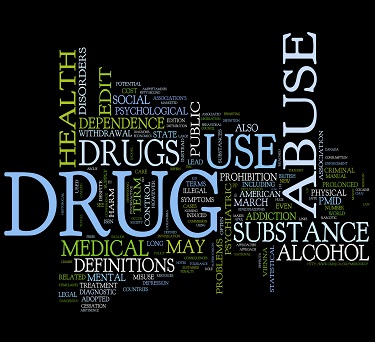 Every year the National Survey on Drug Use and Health (NSDUH) questions a random selection of close to 70,000 Americans. All participants are 12 years and older and the purpose of the survey is to estimate how many Americans are using various illicit drugs, prescription drugs, alcohol and tobacco, and how they are using them. To get accurate data in this way helps with the implementation of preventive programs and treatment offerings for substance abusers. The study is conducted every year so that trends can be established.
Every year the National Survey on Drug Use and Health (NSDUH) questions a random selection of close to 70,000 Americans. All participants are 12 years and older and the purpose of the survey is to estimate how many Americans are using various illicit drugs, prescription drugs, alcohol and tobacco, and how they are using them. To get accurate data in this way helps with the implementation of preventive programs and treatment offerings for substance abusers. The study is conducted every year so that trends can be established.
The most recent NSDUH provides data for 2012. The latest results of the survey give a picture of drug and alcohol use in the U.S. that some may find surprising. Trends in the use of specific drugs show which are decreasing and which are exploding in popularity. The results also show trends in the ages of drug users, the prevalence of binge drinking and attitudes toward smoking.
Binge Drinking On The Rise
Binge drinking is on the rise and is considered a type of substance abuse. The Centers for Disease Control and Prevention define binge drinking as having five or more drinks within a two-hour period for men, and four or more for women. This level and rate of drinking elevates a person’s blood-alcohol content to 0.08.
According to the NSDUH data, more than half of Americans are drinking. That represents over 130 million people. Of those, one quarter, or around 60 million people, binge drink. Not only does binge drinking have serious health consequences over the long term, it can also result in immediate problems, such as drunk driving and accidents.
Spike In Heroin Use
Methamphetamine, commonly called crystal meth, speed, or just meth, is a dangerous, destructive and highly addictive drug. Not only does the drug destroy lives through addiction and health problems, the way in which much of it is made has harmed or killed people. Meth is a drug that can be made with household chemicals and drugstore buys. For this reason, a decade ago, meth labs cropped up around the country and came with poisoning fumes and accidental explosions. The good news from the survey is that use of meth is decreasing. Nearly 731,000 people used meth in 2006, and for 2012 the number dropped to 440,000.
The bad news is that use of heroin is rapidly rising. Another very serious drug, heroin is extremely addictive and has the potential to cause an overdose on the first try. The number of Americans using heroin, according to NSDUH, doubled between 2007 and 2012, from 373,000 to 669,000.
Drug Use Among Baby Boomers Is Increasing
Drug use among the baby boomer generation is on the rise. Compared to a decade ago, the number of adults between the ages of 50 and 64 using drugs doubled. Among those aged 55 to 59, the rate tripled. Americans in this age group were young during the 1960s when drug use exploded. As they age, these people are still using drugs to some extent. They are using more than the generation before them ever did.
Having accurate information from the NSDUH is crucial in developing policies, substance abuse prevention plans and treatments for addicts and abusers. The survey information provides an accurate glimpse of what Americans were doing in 2012 and also how behaviors are changing. Some of the news was good: the number of teenagers smoking cigarettes has been cut in half over the last 10 years. Some news, though, like the explosion of heroin use, is less promising.
The legalization of marijuana in many states has led to increased availability and experimentation. While many individuals with chronic pain related to a serious injury or illness attest to its medicinal uses, there are still concerns about the recreational use of the drug.
Research has shown marijuana to be a “gateway drug” because experimentation and recreational use can give a user access to more dangerous drugs that carry a higher likelihood of addiction and more serious side effects.
Marijuana Users Experiencing Psychosis Even After Use
Another important concern related to marijuana is research connecting its use to ongoing psychotic episodes. Some studies have shown that users can experience psychosis, not only while under the immediate effects of the drug but for extended period following use.
When teens begin using marijuana, however, the risks may multiply. Teen brains are still developing and any substance use can interrupt the important processes occurring in the structures of the brain, causing long-term cognitive impairment.
 A study led by Willemijn A. Van Gastel of the Rudolf Magnus Institute of Neuroscience at the University Medical Centre Utrecht in the Netherlands examined the effect of marijuana on mental health. While many studies have documented the connection between psychological problems and marijuana use, it is unclear whether cannabis use leads to an increased risk of mental disorders or if those with mental health problems are more likely to use cannabis.
A study led by Willemijn A. Van Gastel of the Rudolf Magnus Institute of Neuroscience at the University Medical Centre Utrecht in the Netherlands examined the effect of marijuana on mental health. While many studies have documented the connection between psychological problems and marijuana use, it is unclear whether cannabis use leads to an increased risk of mental disorders or if those with mental health problems are more likely to use cannabis.
The findings were published in Psychological Medicine.
The study analyzed surveys administered to over 10,000 students aged 11 to 16. The questions on the survey requested information about substance use, including cannabis, alcohol and cigarettes.
The students were also asked about other aspects of life, including whether they had experienced any problems at school or if there was any conflict at home. They were also asked about whether there was any history of molestation and other environmental risk factors for mental health symptoms.
Multiple Problems In School And Behavior Associated With Marijuana Use
The results of the analysis showed that there was an association between marijuana use and psychosocial problems. When other risk factors were taken into account, however, the association was not as strong. In addition, there were risk factors that were associated with negative psychosocial outcomes that were also associated with increased levels of marijuana use, including behavioral problems at school, missing school due to illness, truancy and alcohol and cigarette use.
The authors of the study believe that the presence of substance use, low self-esteem and difficulties with mood disorder symptoms could lead to psychosocial problems and marijuana use.
The researchers were surprised to find that there was no evidence of a relationship between the level of marijuana use and the level of poor outcomes in psychosocial measures. This suggests that the risk factors are a critical component in determining whether marijuana use leads to other negative outcomes.
Can Marijuana Use Indicate If A Teen Might Be At Risk For Mental Health Problems?
The authors note that the findings can be understood as a way to predict future negative behavioral and overall psychological and psychosocial wellbeing. In other words, marijuana use can indicate whether a teen might be at risk for mental health problems.
Drug Prevention And Education To Reduce Risk Of Substance Abuse
The findings are helpful for targeting teens that may be in need of prevention and education efforts to improve mental health and reduce the risk of additional substance use. Screening teens for substance use may also help identify possible areas of high risk for mental disorders.
While marijuana is often considered a harmless substance when used in moderation, many of the effects of the drug are not fully explored. Parents are encouraged to talk openly and often with their teens about the risks associated with marijuana use, including the possibility of mental disorders.


